In the last couple of days I’ve been following a discussion in my favourite Facebook group, Golden Age Detection (you can find it here, although you may have to join the group to see anything). As you’ve probably already guessed, group members were discussing Twenty Rules for Writing Detective Stories, an article from the September 1928 edition of The American Magazine.
Although I’ll quote extensively from this article, you can find a copy of it here and I recommend the full article to your attention. The rest of this piece will assume that you have indeed gone and read it.
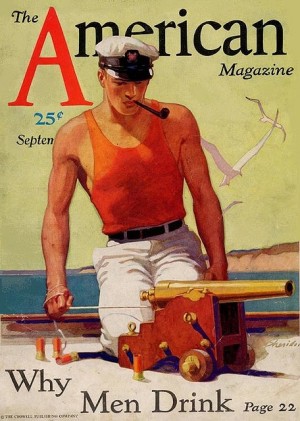 In the process of considering the various arguments, I realized that although I’d certainly read Van Dine’s 20 Rules, it had been so many years that I’d forgotten the article entirely. I thought it would be interesting to have another look at it and share the results here.
In the process of considering the various arguments, I realized that although I’d certainly read Van Dine’s 20 Rules, it had been so many years that I’d forgotten the article entirely. I thought it would be interesting to have another look at it and share the results here.
The first thing that comes to my mind is, in an introductory paragraph before he approaches the rules themselves, Van Dine outlines what he’s trying to do. And there are two things that are fairly crucial here. One is that he’s talking specifically about the “detective story” and the other is, as he says in the opening sentence, that “The detective story is a game.” In fact, he compares it to my favourite game, bridge.
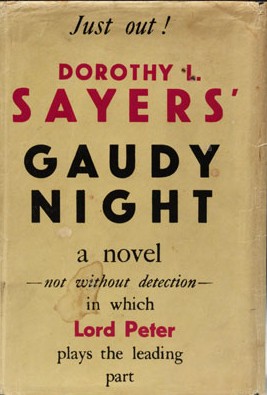 Now, I’ll just ask you to agree with me that “detective story” has a very particular meaning, and it’s differentiated from other similar concepts like “crime story”, “spy story”, etc. First, a detective story must, ipso facto, contain a detective. I think you’ll agree that there must be a crime within the story that is investigated (“detected”) by that detective, and by and large that crime is murder. For the most part that crime is solved in the course of the story by the detective, and the criminal is brought to justice. This all seems very simple and straightforward, but I’ve learned in the past that when you’re dealing with slippery ideas it’s best to define your terms. Certainly there are detective stories not concerned with murder (Gaudy Night by Dorothy L. Sayers comes to mind) and occasionally a criminal gets away or “cheats the hangman” by committing suicide, etc. But for most detective stories, there’s a detective and a murder and a solution and a criminal.
Now, I’ll just ask you to agree with me that “detective story” has a very particular meaning, and it’s differentiated from other similar concepts like “crime story”, “spy story”, etc. First, a detective story must, ipso facto, contain a detective. I think you’ll agree that there must be a crime within the story that is investigated (“detected”) by that detective, and by and large that crime is murder. For the most part that crime is solved in the course of the story by the detective, and the criminal is brought to justice. This all seems very simple and straightforward, but I’ve learned in the past that when you’re dealing with slippery ideas it’s best to define your terms. Certainly there are detective stories not concerned with murder (Gaudy Night by Dorothy L. Sayers comes to mind) and occasionally a criminal gets away or “cheats the hangman” by committing suicide, etc. But for most detective stories, there’s a detective and a murder and a solution and a criminal.
 Whether or not detective stories are a “game” is something that I’ve seen discussed, and participated in discussing, practically to the point of screaming when the topic arises. So I will merely say that many, many people consider detective stories to have the nature of a game, a kind of battle of wits; but I don’t believe the definition of “detective story” should be restricted in this way, so as to entirely outlaw non-ludic approaches.
Whether or not detective stories are a “game” is something that I’ve seen discussed, and participated in discussing, practically to the point of screaming when the topic arises. So I will merely say that many, many people consider detective stories to have the nature of a game, a kind of battle of wits; but I don’t believe the definition of “detective story” should be restricted in this way, so as to entirely outlaw non-ludic approaches.
What follows purports to be “laws” governing the creation of a detective story. When I started looking at these 20 rules of Van Dine’s, I thought “Hmm, some of these aren’t rules.” And indeed, some of them aren’t. Quite a bit of the content of Van Dine’s article is two other things: (1) material that will enable you to discern if something is a detective story or not, and (2) material that lets you know which elements of detective stories Van Dine doesn’t like, or thinks are overdone.
Here’s a transcription of my notes as I read through the 20 Rules. You might want to open a copy of Van Dine’s original article in another window and follow along.
- Mostly correct, although it assumes that detective stories contain detectives, mysteries, and clues. I’d suggest the reader must have AN opportunity to solve the mystery before the detective announces the solution and should be in possession of all necessary information; deductions are another matter entirely.
- I’m not entirely sure what this means, but I suspect it has to do with mysteries that feature an unreliable narrator, like at least one Agatha Christie novel that I bet all my readers are muttering the name of at this point. Whatever Van Dine means, I’m not sure I care to bar anything from the detective story, and I like stories with an unreliable narrator.
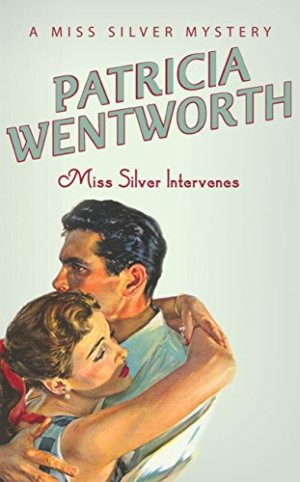 Just plain wrong, and plainly merely a dislike of Van Dine’s. If the A plot is a murder mystery, the B plot can be anything the author desires, and I think Patricia Wentworth demonstrates that romance works quite well.
Just plain wrong, and plainly merely a dislike of Van Dine’s. If the A plot is a murder mystery, the B plot can be anything the author desires, and I think Patricia Wentworth demonstrates that romance works quite well.- Ditto, although Rule 1 applies.
- Mostly correct, although Trent’s Last Case is an example of where this premise can fail. There’s an entire school of humorous detective story writers that would disagree also.
- Agreed, at least with the first sentence. The rest is either obvious or a statement of the kind of book Van Dine likes to read.
- I agree there usually should be a murder, although I offer Gaudy Night again. I am pleased to see Van Dine note that Americans (remember, this was published in The American Magazine) wish to bring the perpetrator to justice. The quote is from Act 1, Scene 5 of Hamlet and might be rephrased as “Murder is always horrible.” I think personally a lot of mystery writers and detective story writers tend to forget that murder is horrible, and I’d like us all to remember that; we’re a bit desensitized these days by television programmes that are thinly disguised torture porn.
 I completely agree, although I have no issue with stories that raise the spectre of supernatural activities as long as they are debunked completely by the end. Vide John Dickson Carr and Hake Talbot.
I completely agree, although I have no issue with stories that raise the spectre of supernatural activities as long as they are debunked completely by the end. Vide John Dickson Carr and Hake Talbot.- Just plain wrong, and plainly merely a dislike of Van Dine’s. He assumes that his way of telling the story is the only way. I believe, however, that it’s a tenet of good fiction writing in a general sense that there should be a single protagonist, or a single individual with whom the reader identifies. So this is a generalized quality of good writing and not merely of good detective stories. For the rest of it — I give you The Moonstone, with its multiple narrators.
- Absolutely correct, although “in whom he takes an interest” might be overstating the case. John Dickson Carr, in The Grandest Game in the World, put it as “any character whose thoughts we have been allowed to share.” I also disagree with that stricture; I wrote about it three years ago in a review of New Graves at Great Norne by Henry Wade. See also Rule 11.
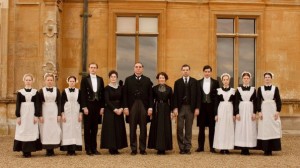 Wrong, wrong, wrong; merely Van Dine’s personal dislike, and snobby and elitist to boot. If Rule 10 is correct, Van Dine is saying here that servants cannot play a prominent part in the story; the way this reads, Van Dine thinks servants or menials are not “worthwhile” and capable of offering a spirited chase to the detective (or, perhaps, that they don’t have thoughts worth sharing). That’s a statement of his ideas about social class, but it should have nothing to do with detective stories.
Wrong, wrong, wrong; merely Van Dine’s personal dislike, and snobby and elitist to boot. If Rule 10 is correct, Van Dine is saying here that servants cannot play a prominent part in the story; the way this reads, Van Dine thinks servants or menials are not “worthwhile” and capable of offering a spirited chase to the detective (or, perhaps, that they don’t have thoughts worth sharing). That’s a statement of his ideas about social class, but it should have nothing to do with detective stories.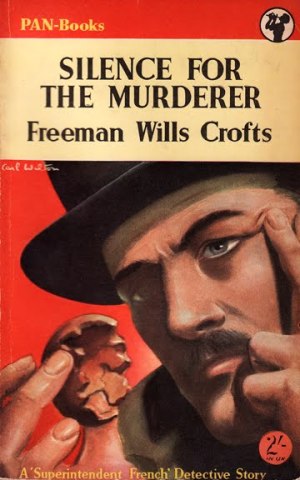 Possibly correct, in terms of guiding the “indignation of the reader,” but why bother making this rule? Half of the output of Freeman Wills Crofts disproves it, to name but one author.
Possibly correct, in terms of guiding the “indignation of the reader,” but why bother making this rule? Half of the output of Freeman Wills Crofts disproves it, to name but one author.- Correct; what Van Dine is saying here is that detective fiction is neither adventure fiction nor secret-service romance. It’s just a definitional issue. I gather he doesn’t care for those sub-genres.
- Correct, with the same stricture as I applied to Rule 8.
- I agree with at least the first sentence, although I think that the number of people who actually solve Golden Age mysteries before reading the final chapter is much, much smaller than Van Dine seems to think. The last sentence of this goes way beyond the evidence he’s offering and although it seems reasonable, I’d like to sit down and argue this out with a couple of well-read friends. Yes, there are readers who spurn the “popular” novel but read detective stories. But to assert that this is because of the possibility that the reader can possibly solve the mystery before the fictional detective is far, far too all-encompassing a statement to suit me. Frankly, I think it’s far more likely that they — we — read Golden Age detective stories because they eschew emotional content and we prefer that kind of emotion-free story. It may be a bug and not a feature.
 It’s certainly true that Van Dine wrote his own books as if he agreed with this extraordinary statement; they mostly lack atmosphere and description (although Benson turns on subtly worked-out character analysis and Bishop and Dragon rely on creepy atmosphere for part of their charms). It rather makes me sad to think that he thought so little of the intelligence of readers and/or the writing abilities of his fellow writers that he thought it impossible to write a book with descriptive passages, character analyses, and atmosphere that would still perform all the functions of a detective story. Instead he prefers to pigeonhole detective stories and make them equivalent to a “ball game or … a cross-word puzzle”. I really dislike this idea; I want more. In fact I want as much atmosphere and description and characterization as I can get, along with the mystery, and I feel that many writers who wrote after Van Dine give it to me.
It’s certainly true that Van Dine wrote his own books as if he agreed with this extraordinary statement; they mostly lack atmosphere and description (although Benson turns on subtly worked-out character analysis and Bishop and Dragon rely on creepy atmosphere for part of their charms). It rather makes me sad to think that he thought so little of the intelligence of readers and/or the writing abilities of his fellow writers that he thought it impossible to write a book with descriptive passages, character analyses, and atmosphere that would still perform all the functions of a detective story. Instead he prefers to pigeonhole detective stories and make them equivalent to a “ball game or … a cross-word puzzle”. I really dislike this idea; I want more. In fact I want as much atmosphere and description and characterization as I can get, along with the mystery, and I feel that many writers who wrote after Van Dine give it to me.
My understanding is that many Golden Age detective story writers felt that in-depth characterization was inappropriate because it gave the reader a way of bypassing the correct “game” structure and instead allowed them to pick the murderer by his/her psychological profile — or, simply put, that the murderer was the person whose character the author most wanted you to understand. Well, as Van Dine himself notes, there are people who get their “answer out of the back of the arithmetic” and whether or not detective stories are a game, they’re not playing properly. Too bad, but let’s not cater to that lowest common denominator.- Just plain wrong (had he not read the Father Brown stories featuring Flambeau?) and I suppose a personal prejudice. There’s at least one novel by Anthony Berkeley that turns this on its head.
 Although I agree for the most part, I can think of at least one Sherlock Holmes story that disproves this idea conclusively and, frankly, there’s no reason for it to be a “rule”. If Van Dine is playing a game, and if the logical chain of events leads to accident or suicide and is fairly before the reader, how can this be wrong?
Although I agree for the most part, I can think of at least one Sherlock Holmes story that disproves this idea conclusively and, frankly, there’s no reason for it to be a “rule”. If Van Dine is playing a game, and if the logical chain of events leads to accident or suicide and is fairly before the reader, how can this be wrong?- Again, this is Van Dine distinguishing between detective stories and secret-service tales and war stories. The part that interests me is the two final sentences here; I think the emphasis on gemütlichkeit is misplaced, given Rule 7’s emphasis on the horror of murder. The last sentence is quite astonishing and I’m not sure I quite understand what Van Dine was getting at. If there are readers who have everyday experience with puzzle mysteries, I think I’m happy not to be one of them. And as an outlet for “repressed desires and emotions”? I think anyone who uses detective stories as that kind of outlet needs psychiatric help. Is he suggesting that people read detective stories because they want to commit crimes in their everyday life — or even solve them? Perhaps I’ve misunderstood; no doubt my readers will lead me to the light in their comments.
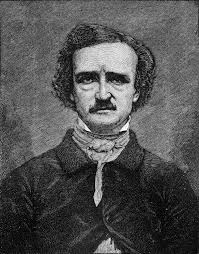 I must note right off the bat that Van Dine threw this in to make the numbers up to 20 Rules; he says so. That being said, this is nothing more than a list of ten things that Van Dine thinks are out of style. and in no sense a “rule”. It amused me to consider that (a) is so different in 2018 that, if you did manage to find a cigarette butt on the scene of a crime, not even considering DNA evidence from saliva, there are so few people who actually smoke these days that your criminal would stand out like a sore thumb. I’m not sure what (g) is referring to. For the remainder of these I can actually think of at least one specific story to which Van Dine would object; one is Poe’s Thou Art The Man. I’ll leave that exercise for the reader, for fear of spoilers.
I must note right off the bat that Van Dine threw this in to make the numbers up to 20 Rules; he says so. That being said, this is nothing more than a list of ten things that Van Dine thinks are out of style. and in no sense a “rule”. It amused me to consider that (a) is so different in 2018 that, if you did manage to find a cigarette butt on the scene of a crime, not even considering DNA evidence from saliva, there are so few people who actually smoke these days that your criminal would stand out like a sore thumb. I’m not sure what (g) is referring to. For the remainder of these I can actually think of at least one specific story to which Van Dine would object; one is Poe’s Thou Art The Man. I’ll leave that exercise for the reader, for fear of spoilers.
I’m not sure if this next suggestion will strike fear into the hearts of my readers, or perhaps make them guffaw at how far out of my depth I am, or perhaps merely raise a dubious eyebrow, but I’m now working on my own set of rules, as yet undetermined as to number. I hope to bring that to you in the very near future. Your suggestions are welcome.

I was mulling a critique of this a little while ago, but backed away from it feeling I lack the overview to really discuss it in any depth. What you’ve done is so hilariously superior to what I may’ve stumbled through that I’m noe even more glad I didn’t bother. There’s always an element of “Well, he wasn’t completely serious, you know…” when trying to discuss this or the Knox Decalogue, so it’s great to see someone who knows the genre so well pick over it in a broadly tolerant way. Good job.
Suggested rules? I’d only have one: the reader must be able to apply the understood internal logic of the book in order to reach the solution. Everything else can flux about as much as it likes, so long as that’s observed. But I look forward to your own longer, more considered list, Noah!
Great article Noah, as always. I have been reflecting on the idea of detective fiction as game, and I am more and more convinced that many people reject detective fiction based on a terrible Murder Mystery party they went to, or a Murder Mystery in a box game they played (where it’s always the person who wears their watch on their left wrist meaning that they were left handed and the only one who could have committed the murder, bluuurgh!)
I couldn’t agree more on Rule 3 about love. Even the idea that he sees ‘amour’ as he puts it as an antithesis to intellect is probably a clear reflection on his love life!
I like rule 5 a lot as well, other than how it applies to satirical or comedy detective fiction as you say. I think rule 5 should be looked at by a lot more contemporary writers. One of my favourite detective shows Death In Paradise has gone so downhill and I think it’s primarily because of the lack of engagement with this rule. The writers are constantly having the lead detective ‘come across’ something, or making wild assumptions based on one tiny thing that could in reality have a thousand meanings.
And my goodness I couldn’t agree more with your ‘torture porn’ reflection on rule 7. I find this kind of writing awful, and this praise of the ingenuity or twisted nature of the serial killer for example to be so horrid. Luther is a good example of a series that both totally misses rule 5, and plays with the ‘torture porn’ idea to really baseless levels.
With rule 9 I also thought of The Big Bow Mystery, and the way the detectives are pitted against each other, which if anything makes you more sympathetic towards your ‘co-deductor’.
Rule 11 is just hilarious, what on earth was he on about?
Totally agreed on your point on rule 16. An what would he say to Carr who actually places clues within the atmosphere of the books?
And Rule 19 is hilarious as well. And as you say seems to be a contradiction about ‘amour’, ‘desire’ and ’emotion’ that he reads about elsewhere. This is funnily enough, I believe, drawing him to the realm of ‘torture porn’ that you described earlier.
Cannot wait to see your own set of rules. I think I would want to make a rule about impossible crimes as well, as I am starting to think that they do have their own set of rules around them as well.
I’m glad you agree with me so much 😉 I feel quite smart this morning! LOL
It occurs to me, based on your first point, that some people may reject detective fiction because they’ve been exposed to the “detective fiction as game” idea and, like someone in my personal life and possibly yours also, hate to play games where they lose, especially if they are seen by others to lose. They have high expectations of their own intelligence and when they fail to solve their first couple of mysteries, give up on the genre.
Haha, that’s a nice thought. Or other than that they see games like Cluedo or some Murder Mystery party as annoying, frivolous or lacking depth (which they can be) and apply that to the fiction genre, imagining that’s what the experience of reading detective fiction is like. I think there is also a certain anxiety around liking crime/mystery/detective fiction, which was present even as far back as Chesterton. I remember in his defence of the detective story essay how he describes the idea that most people think the thought of a good detective story is like a the thought of there being good demon. People find it hard to admit to liking it! Because surely that means you must like the stupid party murder mystery games too.
I certainly think there’s a bunch of people who have assumed long ago that detective stories cannot be literary fiction and vice versa; many of them were English majors at university and/or teach English lit. to others. There’s an assumption that people who enjoy detective fiction are somehow not capable of understanding or enjoying literary fiction (as if Margaret Atwood and Phoebe Atwood Taylor were somehow genetically incompatible tastes). As near as I can remember my 1st-year university experience, detective fiction and literary fiction are both supposed to be “puzzled out” or “solved” by the reader; it’s just that with detective fiction the clues are fairly obvious and not in any way symbolic, and you’re supposed to reach a conclusion before the end of the book, not well after. (And competing theories exist as to what the answer is, with literary fiction.)
That’s a really nice way of putting it. I think the idea of mystery an truth seems to be pretty much fundamental to any fiction and is just managed in different ways by different genres.
[…] locked rooms The Chinese Orange Mystery and the brilliant deconstruction of SS Van Dine’s Twenty Rules for Writing Detective Stories by Noah, they got me thinking: do locked room mysteries need a different set of […]
[…] of the past” thing. You know it isn’t a ghost! You know the room doesn’t actually kill! We have rules for that!. But how can the same deadly circumstances occur over and over, separated by decades if not […]
[…] by some excellent recent posts by Noah Stewart and Dan at thereaderiswarned, and by reading several GAD books recently in which the standard […]